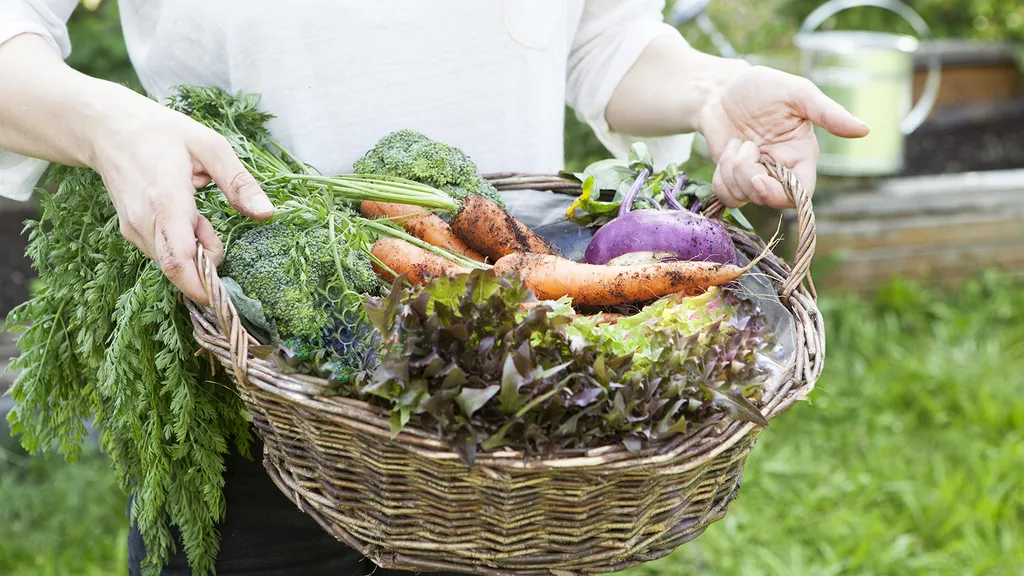“The Benefits of Fall Vegetable Gardening”
Fall vegetable is a rewarding and enjoyable that offers numerous benefits. Not only does it provide sense of fulfillment and satisfaction, but it also allows you to enjoy fresh and tasty vegetables straight from your garden during the fall season. Additionally, fall gardening helps extend the growing season, maximizing the use of your garden space and ensuring a bountiful harvest.
“Planning Your Fall Vegetable Garden”
Proper planning is essential when it comes to creating a successful fall vegetable garden. Start by analyzing your garden space and determining which areas receive the most sunlight during the fall season. Consider the specific requirements of each vegetable and plan accordingly to optimize their growth and yield. Make a list of the vegetables you want to grow, ensuring a mix of leafy greens, root vegetables, and cold-tolerant crops for a diverse harvest.
“Preparing the Soil for September Planting”
Before planting your fall vegetables in September, it is crucial to prepare the soil adequately. Remove any weeds or debris and till the soil to break up compacted areas. Incorporate organic matter such as compost or well-rotted manure to improve soil fertility and drainage. Performing a soil test can also help you determine if any amendments are required, ensuring optimal nutrient levels for your plants.
“Choosing the Best Vegetables for September Planting”
Selecting the right vegetables for September planting is key to a successful fall vegetable garden. Opt for crops that can withstand cooler temperatures and have shorter maturity periods to ensure a timely harvest before the first frost. Some excellent choices include spinach, kale, lettuce, radishes, carrots, and beets. These vegetables thrive in the cool autumn weather, offering a flavorful addition to your meals.
“Best Vegetables to Plant in September”
1. Peas
2. Fava beans
3. Brussels Sprouts
4. Cauliflower
5. Onions
6. Collard Greens
7. Asian Greens
“Seed Selection and Preparation”
When selecting seeds for your fall vegetable garden, choose varieties suitable for fall planting and those with shorter growing seasons. Look for terms like “cool-season,” “cold-tolerant,” or “quick-maturing” on seed packets. Before planting, make sure to check the viability and germination rate of your seeds. Soaking them in water overnight can help speed up the germination process.
“Tips for Successful Planting in September”
To ensure successful planting in September, there are a few tips to keep in mind. Start by providing your young plants with ample water to ensure proper establishment. Additionally, consider using row covers or cloches to protect delicate seedlings from cooler temperatures and pests. Mulching around plants will help conserve moisture, regulate soil temperature, and suppress weed growth.
“Nurturing Your Vegetables through the Fall Season”
As fall progresses, it is crucial to provide ongoing care and attention to your vegetables. Monitor soil moisture levels adjust watering accordingly, ensuring consistent but not excessive moisture. Regularly inspect your for signs of pests or diseases and take appropriate measures to manage them. Apply organic fertilizers as needed to support healthy growth and maximize yields.
“Protecting Your Garden from Cool Weather”
As the weatherols down, it becomes necessary to protect your garden from frost and colder temperatures Consider using row covers, greenhouses, or cold frames to shield your plants from freezing conditions. Watering your plants in the early morning hours can help prevent frost damage as the water acts as insulation against the cold. Stay informed about weather forecasts and be prepared to take necessary precautions.
“Harvesting and Enjoying September Vegetables”
One of the most satisfying aspects of fall vegetable gardening is the of harvesting and enjoying your homegrown produce. Harvest your vegetables when they reach the desired size and peak flavor. Leafy greens can be harvested progressively, allowing new growth to continue. As you savor your harvest, experiment with various recipes and culinary creations to fully appreciate the flavors and nutritional value of your September vegetables.
Fall Vegetable Garden Maintenance”
Regular maintenance is crucial to keep your fall vegetable garden thriving. Remove any spent crops or fallen leaves promptly to prevent the buildup of pests and diseases. Keep weeds under control by regular cultivation or mulching. vigilant for signs of nutrient deficiency, pest infestations, or diseases, and address them promptly with appropriate organic remedies.
“September Gardening Tips and Tricks”
In addition to the specific care requirements for your fall vegetable garden, there are a few general tips and tricks to keep in mind. Take advantage of warm microclimates in your garden by utilizing walls, fences, or south-facing slopes to extend your growing season. Consider sowing cover crops such as winter rye or clover to protect and enrich your soil during the dormant winter months. Implement crop rotation techniques to prevent the build-up of pests and diseases.
In conclusion, September is an ideal time to start planting your fall vegetable garden. By following the outlined steps and tips, you can enjoy a bountiful harvest of fresh and flavorful vegetables throughout the fall season. Happy gardening!

